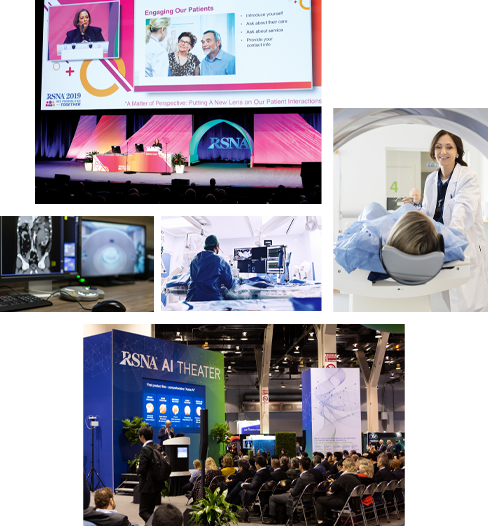Images
Overview of image use
Photography is a powerful and dynamic tool. Our values are reflected in the tone, color and style of execution of the images we use. RSNA images should be clear and focused, with a lack of garish effects or decorative techniques. Images should convey an image of highly trained science professionals. Images should feel observational and spontaneous rather than staged. Use only images that are relevant and add value, and ensure the content does not offend or alienate. Subjects should convey a sense of intelligent focus, calm and leadership.
The tone of RSNA photography should be light and clean, without a dark background. Images can employ a short field of focus, but the main focal point of the image should be sharp and clear.
Images can be reproduced in full color, single color (monotone) and black and white. Images that are used in printed materials should be reproduced at a minimal print quality resolution of 300 dpi.

Journalistic images
Journalistic style photography is a terrific way to showcase our members at work and tell the story of radiology. Subjects do not always need to be smiling or happy, but make sure they don't look angry or bored. Facial expressions need to convey a sense of intelligent focus, calm and leadership. Try whenever possible to use natural lighting. Avoid harsh on-camera flash photography and use a diffused and/or unattached lighting source when documenting events and presentations.

Posed images
Posed images are always a challenge since a staged look can look forced. If possible, try to shoot from an interesting perspective or use close cropping to add interest. Posed shots should be clean, light and bright without a lot of distracting visuals in the background. Avoid images with complex or distracting backgrounds. However, also avoid images with a studio backdrop or other indicators that the image was taken in a photographer’s studio. RSNA images should be documentary in style in order to convey a feeling of authenticity. Avoid the overuse of colored “gel” lighting or computer effects. Use natural light whenever possible and look for interesting dynamic crops and compositions.
